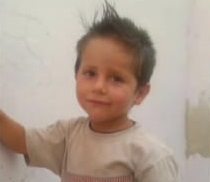Incident Code
Incident Date
Location
Geolocation
Geolocation
Airwars Assessment
(Previous Incident Code: S928)
Seven or eight civilians including women and children from the same family died in an alleged Coalition artillery on 16th Street in Raqqa’s Rumaila neighbourhood, according to local sources.
The date has been changed from the 23rd to the 22nd since Amnesty International conducted field research in Raqqa.
Q_Alenzy reported the death of six members of the Sheiko family when “warplanes” allegedly shelled “their house behind Al-Salihiya library in Rumaila street on Thursday afternoon.” Other sources reported that seven civilians from the same family died, while Jisr TV put the death toll at eight and blamed the Coalition. It has since been discovered by Amnesty field research that the eighth victim was the fetus of Buthaina. She was at the end of her pregnancy when she was killed.
In February 2018 the Coalition made its first assessment of the case, classing it as ‘non credible’.
The Amnesty and Airwars’s joint April 2019 report ‘War in Raqqa: Rhetoric versus Reality’ later reported that “Six members of the Sheikho family – three children, one woman and two men – were killed in their sleep when their home was struck by an artillery shell at 2.45 am. ”
A survivor of the artillery strike named Mohammed gave a testimony to Amnesty researchers: “I lost my two children. My baby girl was only 25 days old. How can it be acceptable to kill children? This war had no mercy and no humanity and we defenceless civilians paid the price.”
In its monthly civilian casualty report for October 2019 – published on December 5th of the same year – the Coalition again assessed this event as ‘non credible’, noting: “June 22, 2017, in Raqqah, Syria, via Amnesty International report. After a review of all available records it was determined that, more likely than not, civilian casualties did not occur as a result of a Coalition action. 2736/AI-24/S928 37SEV020795”.
The Coalition provided coordinates accurate to within 100 metres, indicating the location on which it had focused its assessment.
Victims
Family members (7)


Key Information
Geolocation Notes
According to Amnesty research there was no visible change in June this building, 2017/08/04-2017/08/11 (or next door 2017/07/06-2017/07/19).
